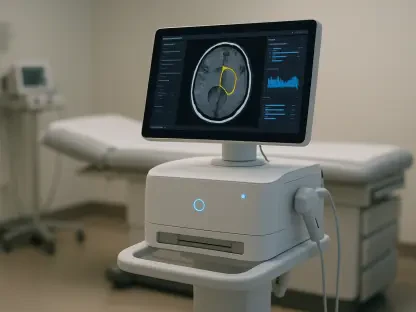In an era where environmental challenges loom large, the healthcare industry faces a critical imperative to rethink its operational footprint, particularly in medical facilities like hospitals and clinics that consume vast amounts of energy and resources daily. The push for sustainability is no longer just an ethical choice but a strategic necessity, as these institutions grapple with high costs and significant waste output while striving to uphold their mission of promoting health. This exploration delves into innovative and practical approaches that can transform medical facilities into models of environmental responsibility. By adopting targeted strategies, such facilities can drastically reduce their ecological impact, achieve substantial cost savings, and set a powerful example for community well-being. From energy-efficient technologies to forward-thinking waste management practices, the path to a greener healthcare sector is both achievable and urgent, promising benefits that extend far beyond the walls of any single institution.
Energy Efficiency: Cutting Costs and Carbon Footprints
Medical facilities are often among the most energy-intensive buildings, with non-stop operations driving up electricity bills and carbon emissions at an alarming rate. Addressing this challenge starts with actionable upgrades that yield immediate results. Transitioning to LED lighting, for instance, offers a dual advantage of lower power consumption and extended lifespan compared to traditional bulbs, reducing both utility expenses and maintenance needs. Similarly, fine-tuning heating, ventilation, and air conditioning systems through regular maintenance and smart thermostats ensures optimal performance without wasteful energy use. These changes not only lighten the financial load but also contribute to a smaller environmental footprint, aligning healthcare operations with broader sustainability goals while maintaining a comfortable environment for patients and staff.
Beyond basic upgrades, a deeper commitment to energy efficiency involves investing in cutting-edge medical equipment designed with power conservation in mind. Modern devices that meet stringent energy standards can perform critical functions without the heavy draw on electricity that older models often require. Additionally, conducting energy audits to identify inefficiencies allows facilities to target specific areas for improvement, ensuring resources are used wisely. This proactive approach demonstrates that sustainability and high-quality patient care can go hand in hand, as reduced energy waste translates into more funds available for medical services. The ripple effect of such measures positions medical facilities as leaders in environmental stewardship, proving that small, strategic decisions can drive significant progress.
Waste Management: Minimizing Impact Through Smart Practices
The sheer volume of waste produced by medical facilities presents a daunting challenge, with tons of materials discarded daily from clinical and administrative operations. Tackling this issue head-on requires a comprehensive strategy focused on reduction and responsible disposal. Establishing robust recycling programs with clearly marked bins for paper, plastics, and other materials encourages proper sorting and minimizes landfill contributions. This initiative, when paired with staff training on waste segregation, fosters a culture of accountability and environmental awareness. By prioritizing recycling, facilities can significantly cut down on waste while contributing to resource recovery efforts that benefit the wider community.
Equally important is the shift toward reusable medical supplies wherever safety and sterilization standards allow, such as opting for reusable gowns or instruments instead of disposable alternatives. This reduces reliance on single-use plastics, which often end up as persistent environmental pollutants. Furthermore, stringent protocols for managing hazardous waste, including proper containment and disposal of biohazards, protect both the ecosystem and healthcare workers from potential harm. These combined efforts reflect a growing trend in the industry to rethink waste as a resource to be managed rather than a problem to be discarded, showcasing how medical facilities can play a pivotal role in reducing environmental degradation through deliberate, impactful choices.
Sustainable Purchasing: Shaping a Greener Supply Chain
Purchasing decisions in medical facilities carry far-reaching implications for sustainability, influencing everything from production emissions to end-of-life disposal. A thoughtful approach begins with prioritizing vendors who offer eco-friendly products, such as those made from recycled or biodegradable materials, thereby supporting a circular economy. Sourcing from local suppliers also cuts down on transportation-related carbon emissions, fostering regional partnerships while reducing environmental impact. This strategy not only aligns with sustainability objectives but also enhances the resilience of supply chains by minimizing dependence on distant providers.
Delving deeper, assessing the full lifecycle of products—from manufacturing to disposal—enables facilities to make informed choices that prioritize long-term environmental benefits over short-term cost savings. The growing availability of sustainable medical supplies, including packaging and equipment, offers an opportunity to drive systemic change across the healthcare sector. By championing these practices, medical facilities can influence market demand for greener alternatives, encouraging manufacturers to innovate. This positions healthcare providers as catalysts for broader industry transformation, demonstrating that every purchasing decision is a chance to advocate for a healthier planet and a more sustainable future.
Water Conservation: Preserving a Vital Resource
While often overshadowed by energy and waste concerns, water usage in medical facilities is a critical area where conservation can make a substantial difference. Simple yet effective upgrades, such as installing low-flow fixtures in restrooms, patient rooms, and staff areas, can dramatically reduce unnecessary water waste without compromising hygiene or comfort. These measures are cost-effective and quick to implement, offering an accessible entry point for facilities looking to enhance their sustainability profile. The impact of such changes extends beyond individual institutions, contributing to global efforts to safeguard water as a precious and finite resource.
Taking conservation a step further, selecting water-efficient medical equipment, like advanced sterilizers and laundry systems, can significantly lower daily consumption in high-usage areas. Regular maintenance to detect and repair leaks also plays a vital role in preventing unnoticed waste. These initiatives highlight how incremental improvements can accumulate into meaningful savings, both in terms of resources and operational costs. By embedding water conservation into daily practices, medical facilities underscore their commitment to environmental responsibility, showing that even the smallest adjustments can contribute to a larger movement of sustainability within the healthcare landscape.
Renewable Energy: Pioneering Clean Power Solutions
Embracing renewable energy sources marks a visionary step for medical facilities aiming to reduce reliance on fossil fuels and curb greenhouse gas emissions. Installing solar panels on rooftops, for example, harnesses abundant sunlight to power operations, from lighting to critical medical devices, cutting both carbon output and long-term energy expenses. In regions with favorable conditions, exploring wind turbines as a complementary energy source adds another layer of sustainability. These investments signal a forward-thinking mindset, aligning healthcare with the global transition to clean energy while demonstrating tangible environmental benefits.
The adoption of renewables also offers a unique opportunity for medical facilities to inspire others, as visible installations like solar arrays serve as powerful symbols of commitment to a greener future. Government incentives and falling costs of renewable technologies further ease the transition, making such projects increasingly viable. By integrating these systems, facilities not only lower their ecological impact but also position themselves as innovators in a sector often slow to adopt change. This pioneering spirit can spark wider adoption across industries, proving that healthcare can lead the charge in building a sustainable tomorrow through bold, impactful energy solutions.
Future Horizons: Building on Sustainable Foundations
Reflecting on the strides made, it becomes evident that medical facilities have taken significant steps to embed sustainability into their core operations through energy efficiency, waste reduction, and renewable energy adoption. Each initiative, from installing low-flow fixtures to prioritizing eco-friendly suppliers, contributes to a broader legacy of environmental care. Looking ahead, the focus shifts to scaling these efforts, with plans to collaborate across the sector for shared learning and innovation. Encouraging partnerships with technology providers and policymakers emerges as a key next step to accelerate progress. Additionally, investing in staff education ensures that sustainable practices remain a priority at every level. These actions, built on past achievements, pave the way for a future where healthcare not only heals individuals but also nurtures the planet, setting a benchmark for other industries to follow.









